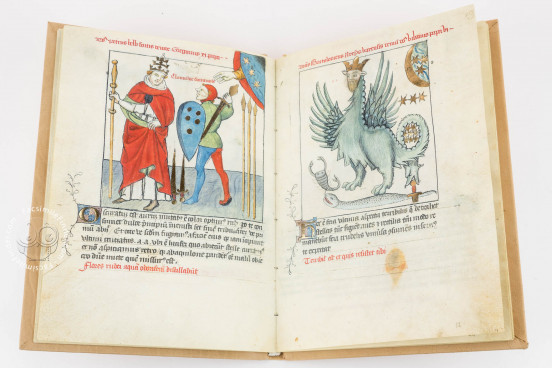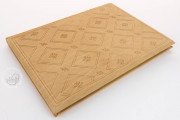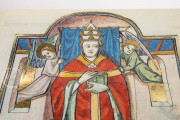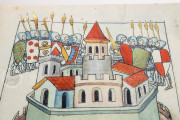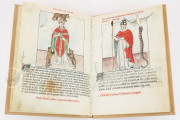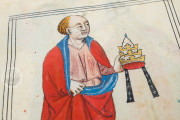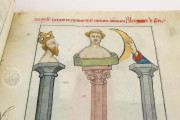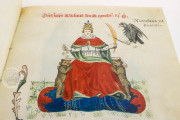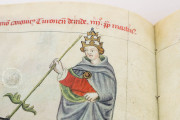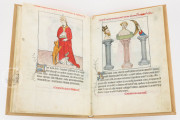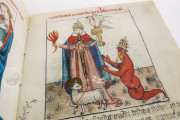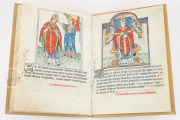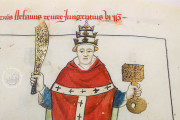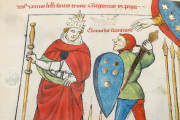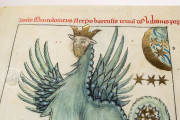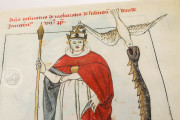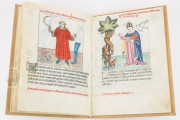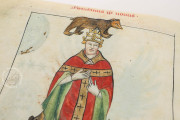The Latin term vaticinium indicates a prophecy, and the Bologna Vaticinia Pontificum is a series of prophecies drawn from the lives and deeds of medieval popes. Although Italy seems to have been the center of production for many of these "galleries of popes," most of this manuscript was produced in Basel. Containing a sequence of thirty prophecies in Latin, the manuscript boasts forty-six colorful portraits highlighted in what appears to be an imitation gold that gives a metallic shimmer to the images.
Historically misattributed to Joachim of Fiore, the founder of the Calabrian order, this work of prophetic literature came into being at various stages of composition to gather the stories of the popes from Nicholas III (d. 1280) to Eugene IV (d. 1447) and to demonstrate how their actions directed the Church's destiny. This collection of mystical prophecies was especially popular in the fifteenth and sixteenth centuries.
A Gallery of Popes
The particulars regarding the creation of this manuscript remain a mystery. Four leaves with images of sibyls—female prophets of classical antiquity—were added to the codex sometime after its original creation. Those paintings are attributed to the north Italian court painter known as the Master of the Vitae Imperatorum, who was active principally in Milan.
The papal portraits are mystical in meaning: the figure of a pope is paired with a variety of real and mystical creatures that serve an allegorical function. The non-narrative nature of the illustrations may be likened to the emblematic workings of heraldry, in which a person is associated with symbols and animals that represent their characteristics.
Ceremonial Script
The miniatures work with the text to create an intriguing and cryptic word/image relationship. The manuscript features highlights of imitation gold, used for details in the miniatures and to decorate the luxurious initials. The scrolling acanthus leaves blooming from these gold letters set on red and blue filigree help localize the manuscript to Basel.
Rebound
The addition of the section containing images of sibyls, along with the completely incorrect sequencing of the prophecies, makes the Bologna Vaticinia Pontificum a puzzle. It is impossible to date when a rebinding commission resulted in the careless disordering of the pages, but the manuscript shows traces of heavy use that likely necessitated regular rebinding.
This prized codex naturally found its way into the libraries of prominent collectors, most notably the Italian artist Pelagio Palagi (1775-1860), a renowned bibliophile and art collector. Upon Palagi's death, the book moved from his private library to his native city of Bologna, the named heir of his vast collections.
We have 1 facsimile edition of the manuscript "Bologna Vaticinia Pontificum": Vaticinia Pontificum de Gioacchino da Fiore facsimile edition, published by AyN Ediciones, 2006
Request Info / Price
